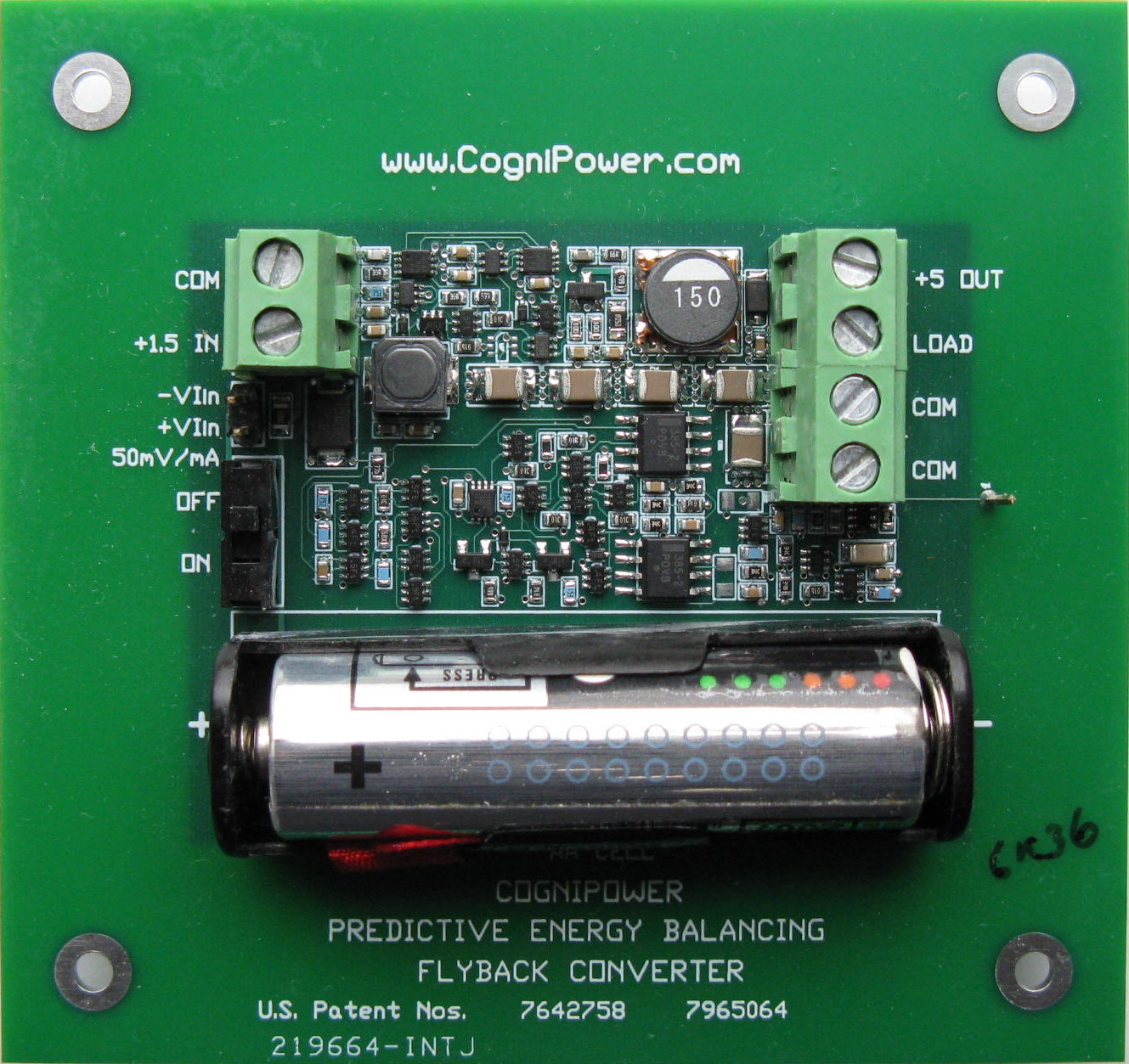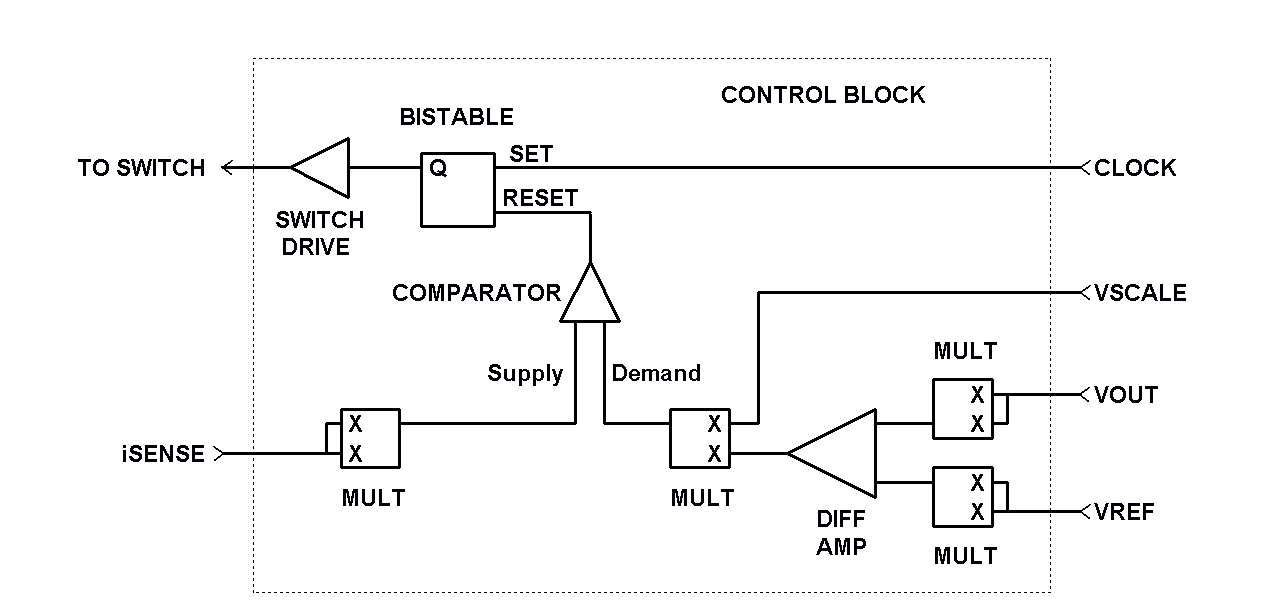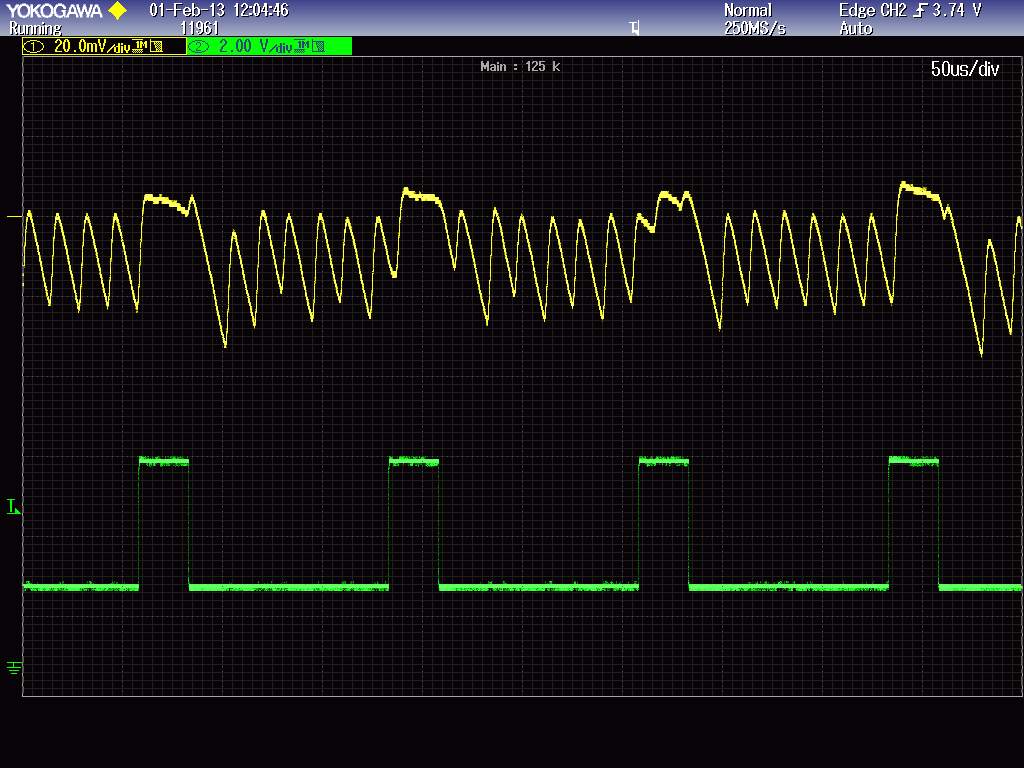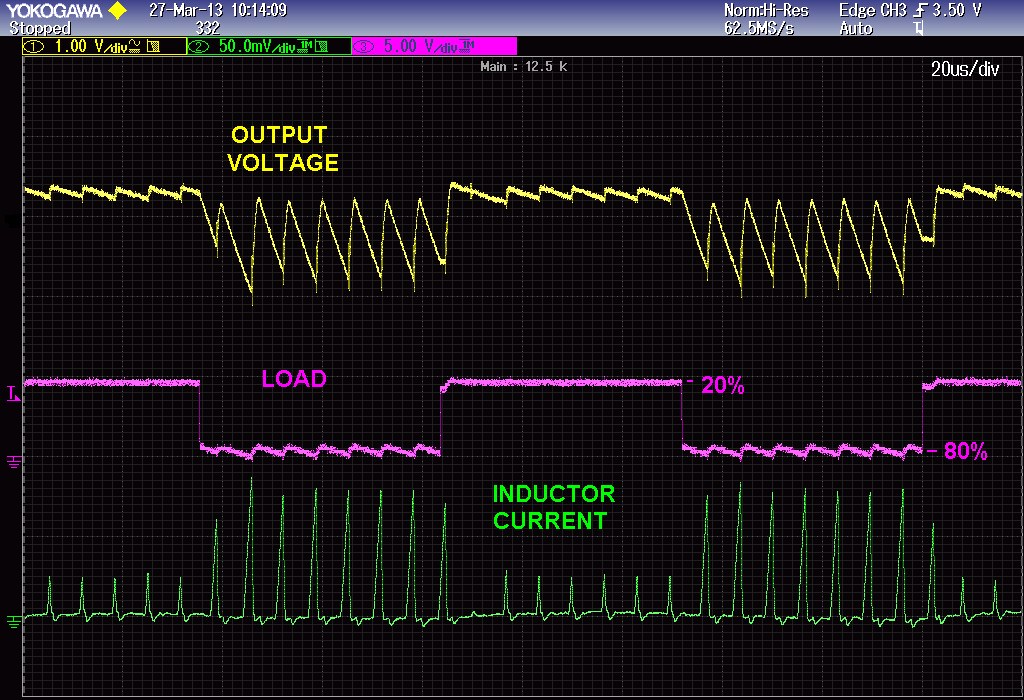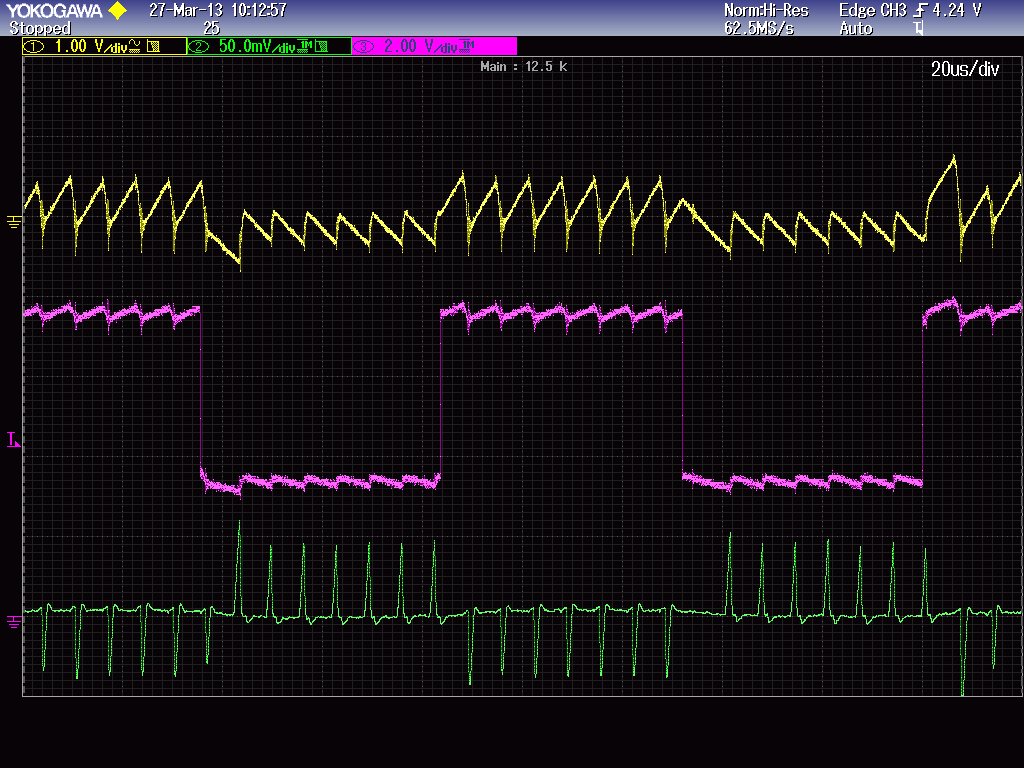|
Predictive Energy Balancing for agile, efficient power conversion
An evaluation board for CogniPower Predictive Energy Balancing Control of flyback converters is now available. The dynamic response
displayed is near ideal, and the power output is harmonically pure. The usual trade-off between stability and agility is eliminated.
This power converter has both intrinsic stability and excellent transient response.
The predictive energy balancing technique eliminates the tendency to overshoot or undershoot after a disturbance. The evaluation system recovers entirely from a full-scale disturbance in one or two control cycles. The input voltage is a AA battery. The output is 5VDC. Circuitry to generate a sawtooth load is included to exersize the system. Full operation and smooth start up are guaranteed to 1.1 volts on the battery. The evaluation board could be used, for example, to produce an extremely well-regulated 5 volt supply in a system lacking electrically quiet power supplies. The additional circuitry included for energy balance calculations requires a squaring function. In the evaluation board, two dual transistors, each occupying 0.1" square, perform the squaring function. Even when built in discrete analog form, the extra circuitry adds only pennies to the cost of the control circuitry. This technology could be folded into generalized power management chips without adding significant cost or complexity. A block diagram of a fully generalized form of Predictive Energy Balancing control is shown below. Without the three squaring functions you would have a conventional controller for switched-mode power.
The screen shot above shows that Predictive Energy Balancing provides true single-cycle regulation. The green trace is a load step of 10% to 90% load. The output, seen in yellow, is regulated to 5 volts. A heavy load is applied for 100us, and a light load for 25us. Each conversion cycle is approximately 15 us, and the power conversion is not synchronized with the load. This timing is selected so that one, and only one, complete conversion cycle will always occur during the brief period of light load. The regulation point (peaks in the output waveform) stays within 10 mv under all circumstances. The absence of overshoot and undershoot clearly differentiates Predictive Energy Balancing controls from conventional controls for switched-mode power.
The screen shot above is from the PEB Audio Amplifier running as a DC to DC converter. The load is unipolar, changing from approximately 20% to 80% of full load at 10 kHz. The output filter capacitor here is only 470 nF which is more appropriate for amplifier application. For a DC/DC power converter, 800mv of output ripple would likely be excessive. However, a 10uf filter would result in 40 mv of ripple. The converter is running here at 166kHz. It will operate comfortably at over 5 times that rate, so the output ripple can be just a few mv, if required. The important thing to note above is the single-cycle regulation. The fastest Pulse Width Modulated (PWM) power converters settle in 6 cycles after a step change. Under these conditions, a PWM converter would never reach proper regulation. In contrast, the PEB regulator shows near-ideal single-cycle response.
In the PEB Audio Amplifier screen shot above, the square wave load is bidirectional. The green inductive current trace can be seen to reverse polarity when energy is being moved from output to input. The regulation stays near-ideal, even under these exceptional circumstances. This patented technology was first made public at APEC 2011 in Forth Worth, TX. Contact us at info@cognipower.com and ask about the Predictive Flyback Evaluation Board, CP-PEB-FC-01 |
